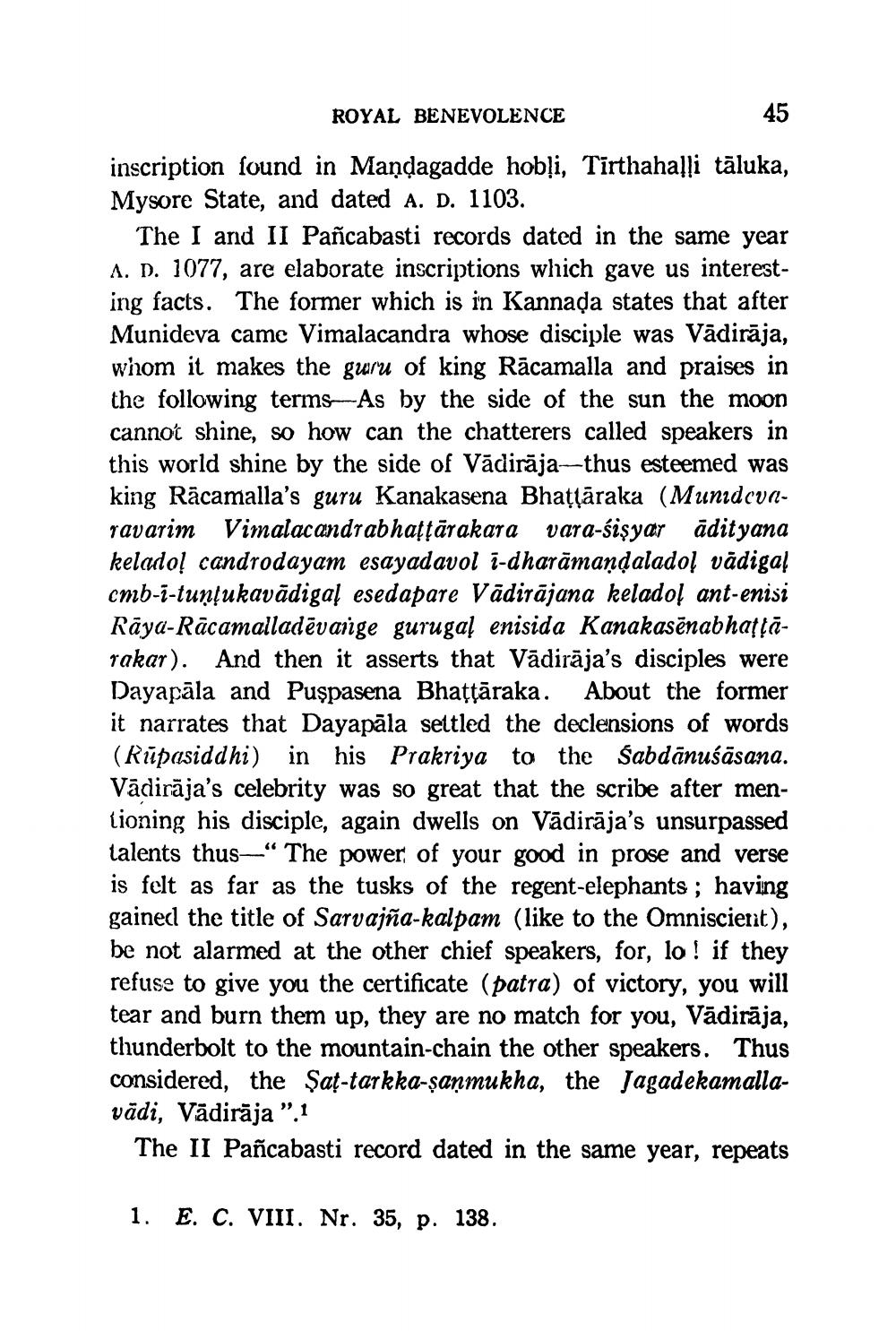________________
ROYAL BENEVOLENCE
45
inscription found in Mandagadde hobļi, Tīrthahaļļi tāluka, Mysore State, and dated A. D. 1103.
The I and II Pañcabasti records dated in the same year A. D. 1077, are elaborate inscriptions which gave us interesting facts. The former which is in Kannada states that after Munideva camc Vimalacandra whose disciple was Vādirāja, whom it makes the guru of king Rācamalla and praises in the following terms-As by the side of the sun the moon cannot shine, so how can the chatterers called speakers in this world shine by the side of Vădirāja—thus esteemed was king Rācamalla's guru Kanakasena Bhattāraka (Munidcunravarim Vimalacandrabhasțārakara vara-śişyar adityana keladoļ candrodayam esayadavol i-dharāmaņdaladol vădigal cmb-i-tunțukavādigaļ esedapare Vădirājana kelados ant-enisi Rāya-Rācamalladēvarige gurugal enisida Kanakasēnabhatļārakar). And then it asserts that Vādirāja's disciples were Dayapāla and Puşpasena Bhațțāraka. About the former it narrates that Dayapāla settled the declensions of words (Rūpasiddhi) in his Prakriya to the Sabdānuśāsana. Vādirāja's celebrity was so great that the scribe after mentioning his disciple, again dwells on Vādirāja's unsurpassed talents thus-“ The power of your good in prose and verse is felt as far as the tusks of the regent-elephants; having gained the title of Sarvajña-kalpam (like to the Omniscient), be not alarmed at the other chief speakers, for, lo ! if they refuse to give you the certificate (patra) of victory, you will tear and burn them up, they are no match for you, Vādirāja, thunderbolt to the mountain-chain the other speakers. Thus considered, the Şat-tarkka-șāņmukha, the Jagadekamallavādi, Vădirāja ".1
The II Pañcabasti record dated in the same year, repeats
1. E. C. VIII. Nr. 35, p. 138.




